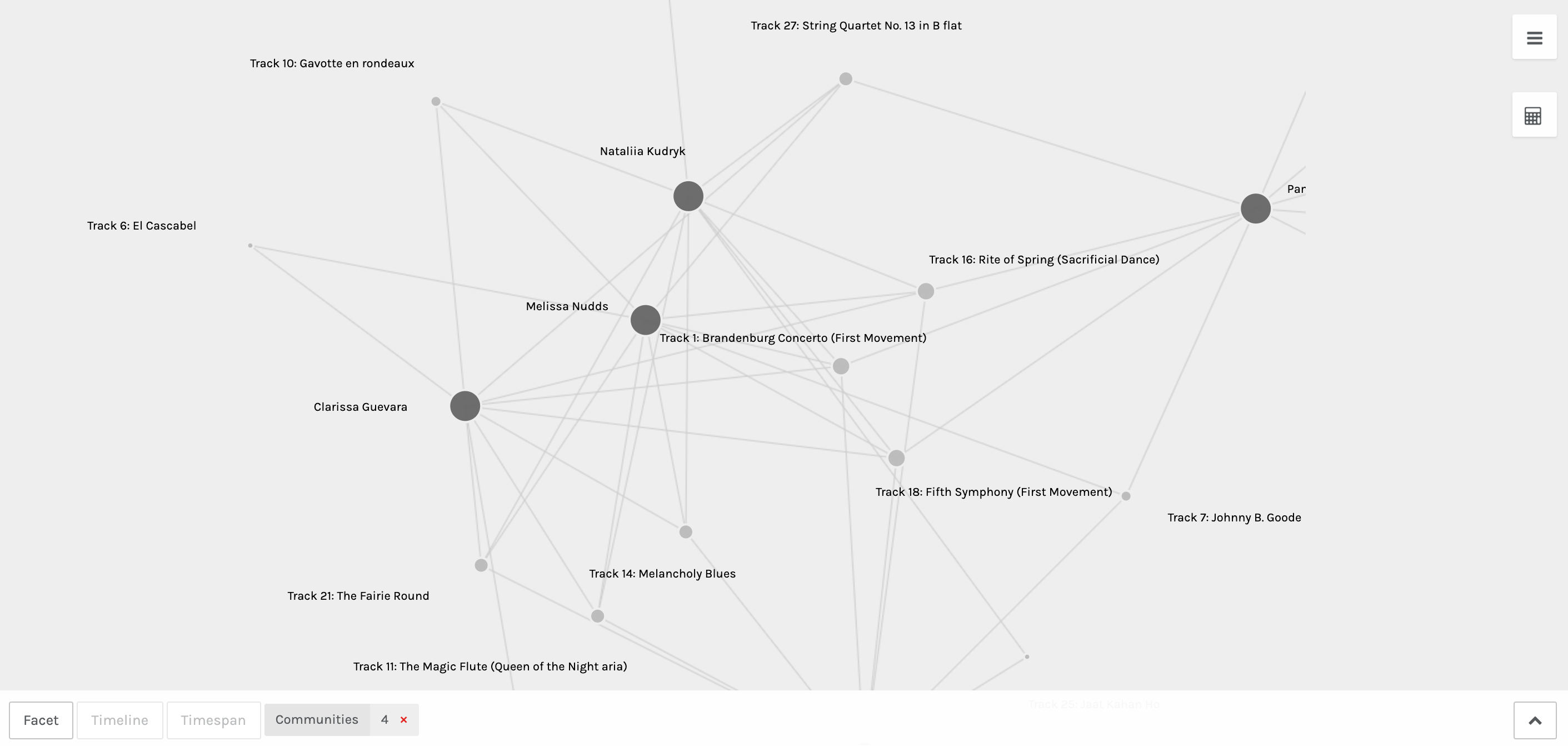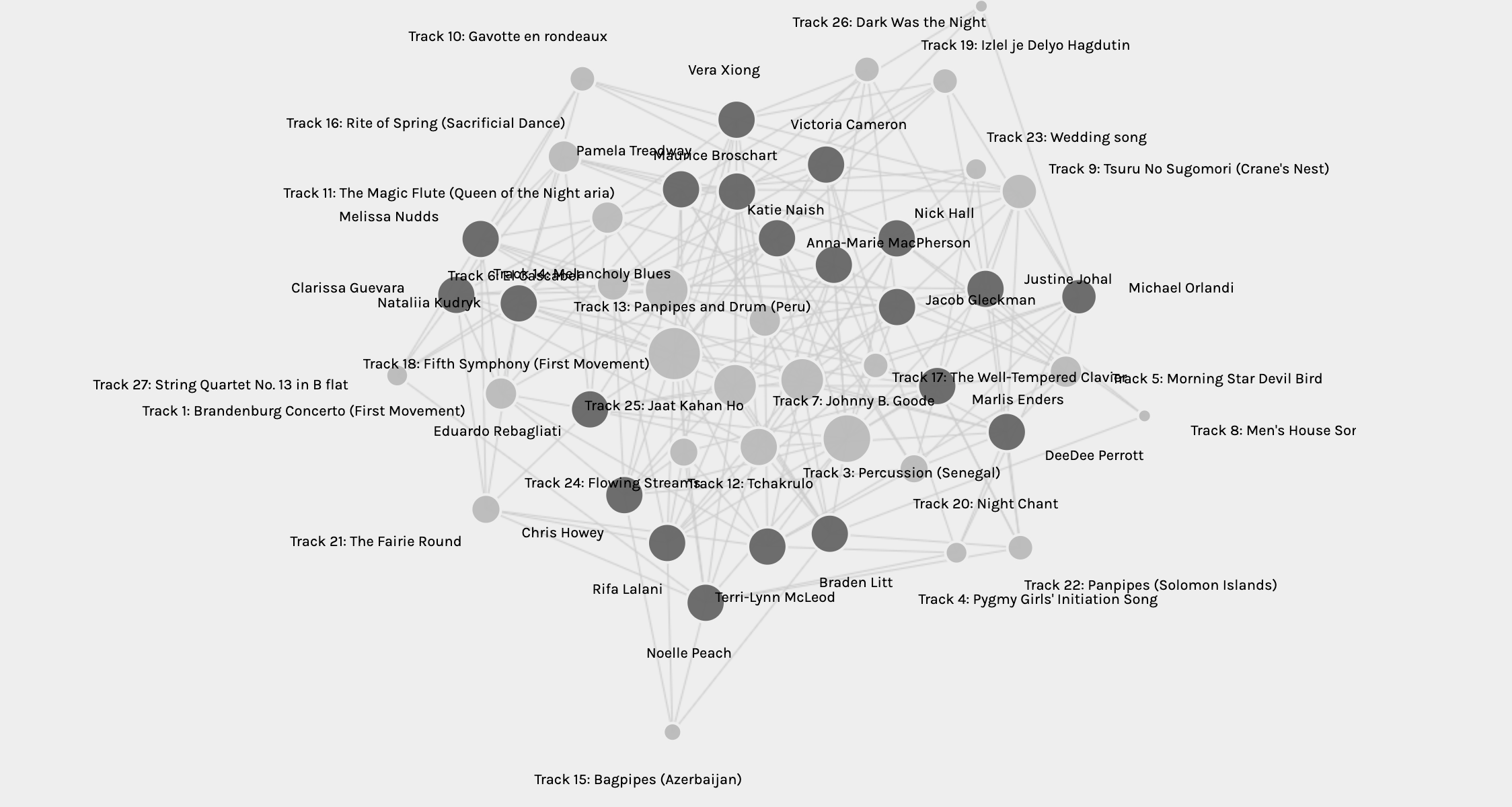Task 9: Network Assignment Using Golden Record Curation Quiz Data
I want to believe that my name and choices were grouped with a particular community of peers (Figure 1) due to our similar interest and/or preference for the pieces. Many of the tracks, within this isolated community, are the same as the ones I had chosen; hence our grouping. However, it can also be the musical style/genre of the tracks, classical musical, that contribute to this idea. We were grouped because we prefer that same music or we simply chose them because they are similar in sound, genre or even era.
 Figure 1: Communities: 4
Figure 1: Communities: 4
When looking at the whole data graph (Figure 2), seeing all the node interspersed and overlapping is quite a sight.

Figure 2: Whole Data Graph
At quick glance, I think it could very much function as the web does, as described by Code.org. They outline how the web is a series of hyperlinks that can lead one node to another (2017). If one were to look at our class’ data, and searched one of the tracks, amongst the existing Golden Voyage track list, they are likely to be led to a certain set of tracks based on how we have “chosen” to graph it. Based on our quiz data, if a person were to search one track, or node, they are likely to be led to a “similar” track; much like they would on the web. However, our “keywords” are specific to our set of data; rather than a common definition or “value” of the keyword or node. For example, how Code.org describes when searching “travel to mars”, how they define or value the word “Mars” – the planet rather than mythology, help determine what hyperlinks show up. Our nodes and keywords have been determined in a particular way, as they would on the web.
Upon further inspection, it can be argued that much of my peers’ curations were also established by genre. When looking at the far right of the graph (as seen on Figure 2), the track/nodes grouped, imply a definition of “non-classical” music. Furthermore, there are connections between track/nodes that can be described as tracks rooted in percussionist sound or drum notation, some with chanting. This further supports the idea that our data curated may have been rooted in musical genres and stylings.
My speculations of the groupings in Figure 1 can be grounded in Code.org’s description of the web and interconnected nodes. While it may be that we chose based on preference, like myself; perhaps my peers and I have similar definitions and values attached to the tracks. Regardless if it is universal definitions, in our class, it would suggest that it is.
References
Code.org. (2017, June 13). The Internet: How Search Works
. Retrieved from https://www.youtube.com/watch?v=82zlRaRUsaY
Systems Innovation. (2015, April 19). Network Connections
. Retrieved from https://www.youtube.com/watch?v=2iViaEAytxw&ab_channel=SystemsInnovation

